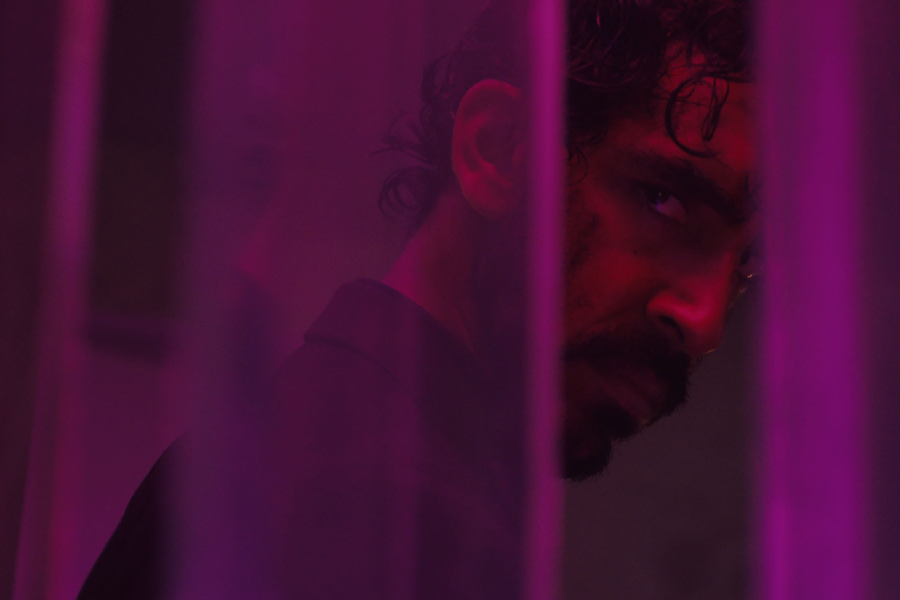As the film opens, a lone German commander on horseback is riding away from the horizon with the sun rising behind him. He is riding through what looks like a tank graveyard, surveying the damage wrought from the previous battles and searching for anything or anyone who might have survived. Suddenly, he is ripped from his horse and stabbed violently and repeatedly by an unknown soldier, who then releases his horse and returns to one of the destroyed tanks, shown to actually be fully functional, disguised among the wrecks. He is revealed to be Sgt. Don “Wardaddy” Collier (Brad Pitt), whose crew then emerges from the tank and drives back to base.
This is just a taste of the gritty realism that war drama “Fury” has to offer. The film is shown through the eyes of the recently enlisted Norman Ellison (Logan Lerman), who joins up with Collier and the crew of the titular tank as they make their way through the European theater near the end of World War II. While “Fury” does sometimes suffer from certain film cliches and a few technical mishaps, it still enwraps the audience into its world, driving it with a stiff and unabashed push through the horrors and atrocities of war.
The film’s strongest asset is the crew of the tank themselves. Each actor has a decent amount of screen time for the audience to connect with their characters, though Ellison and Collier are shown in more detail and are definitely placed more into focus than the other three. The acting from all five men is top notch, with the best performance coming from Shia LaBeouf, who showcases a subtlety only hinted at in previous films as the scripture-quoting Army Technician Boyd “Bible” Swan, and Jon Bernthal, who is almost unrecognizable as the filthy and foul-mouthed Grady “Coon-Ass” Travis.
All five blend perfectly as an ensemble, with the best scenes being them either talking about the battle to come or at the dinner table remembering the battles of years past. Unfortunately, this leads to the cliche of identifying each character by a stereotype due to lack of individual growth: Travis as the redneck, Trini “Gordo” Garcia (Michael Pena) as the Latino, Swan as the Bible-thumper, Collier as the grizzled leader and Ellison as the innocent. While this might be a problem for a lesser film, “Fury” has the good fortune of having actors so dedicated to their roles and to one another that they manage to convince the audience to overlook the cliches and become invested in every single one of the characters.
Another main aspect of the film is its use of violence. It doesn’t shy away from showing viewers the violent horror of World War II, delivering shocking and sometimes stomach-churning visuals, the likes of which have not been seen since “Saving Private Ryan.” The film will often go out of its way to show how gruesome the battles are, and this sometimes works against it, as it may become too gory for some audiences to stomach. A prime example is when Ellison is cleaning the blood of a soldier he dispatched out of a tank and comes across bits of his face. However, the violence doesn’t completely spoil the experience, as the film is balanced out by moments of dialogue among the main characters. Both parts are given ample screen time, but once bullets start flying, the audience experiences every shot in detail.
The technical aspects of the film are mostly solid, with the highlights being the cinematography and score. The film manages to capture the claustrophobic feeling of being shoved into a tank for hours on end, while still giving space to breathe by allowing for some excellent fast-paced shots of battle. With these shots, the film keeps up with action scenes well, ensuring that the audience never feels like it missed a moment of conflict. The editing does suffer at points, with some shots being cut too short and others being held too long, but they don’t occur often, only proving troublesome during the first 20 minutes of exposition.
“Fury” is not a film for the faint of heart. It is not only one of the most gruesome films to be released for some time, but it also pulls no punches by unapologetically displaying the gore of war. Many viewers may find it too much for their tastes, but it should still be given the proper attention it deserves, simply because of how well executed it is. With a magnetic cast and a heart-wrenching tale to tell, “Fury” is not merely a movie, but a cathartic experience that rises above the common cliches and may change the way viewers look at war, for better or worse.


















